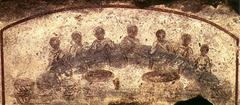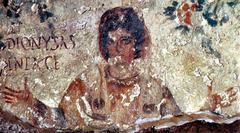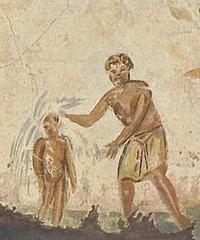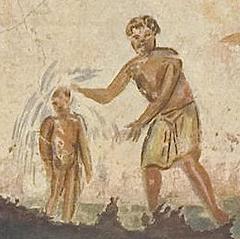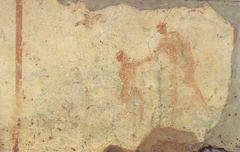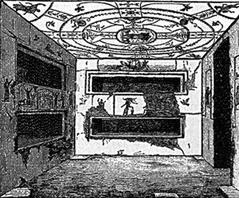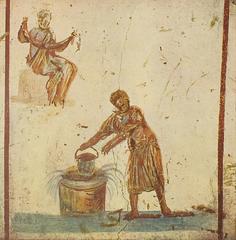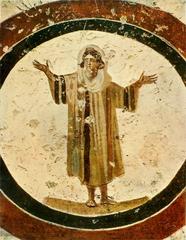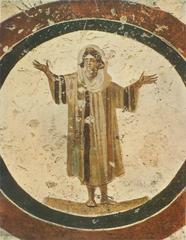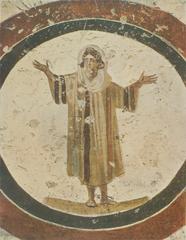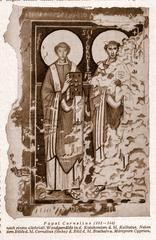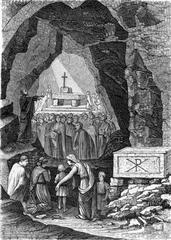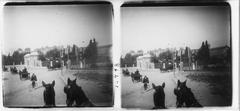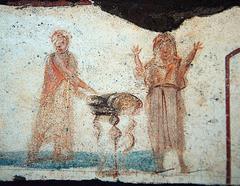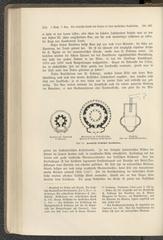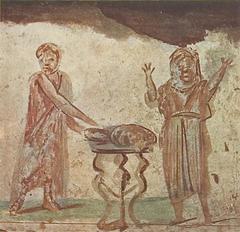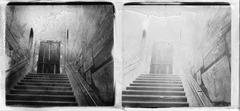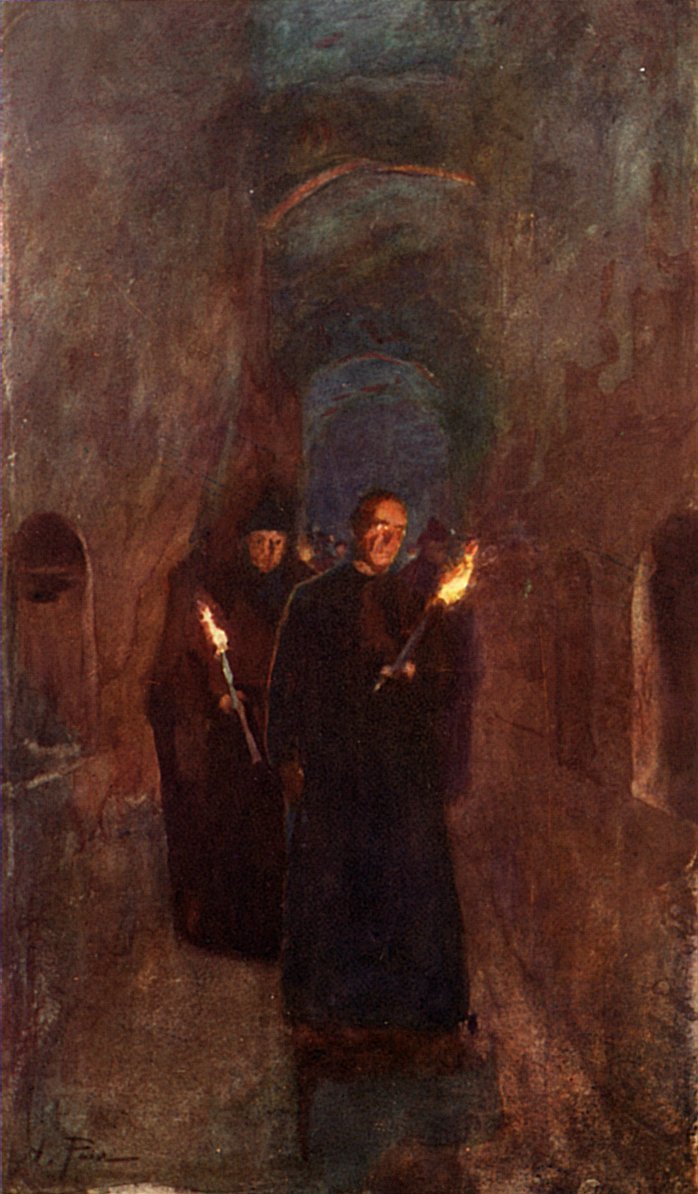
Catacomb of Callixtus Visiting Hours, Tickets, and Comprehensive Guide to Rome’s Historic Underground Site
Date: 14/06/2025
Introduction
The Catacomb of Callixtus is among Rome’s most significant early Christian burial complexes, renowned for its vast subterranean galleries, sacred crypts, and profound historical importance. Situated along the ancient Appian Way, this extraordinary necropolis offers a unique window into the faith, artistry, and social fabric of early Christianity, especially during times of persecution. Established in the mid-2nd century CE, it eventually became the official cemetery of the Church of Rome, housing the remains of approximately 500,000 Christians—including at least sixteen popes and numerous martyrs.
This guide provides an in-depth overview of the Catacomb’s history, architectural features, and spiritual legacy, alongside practical information about visiting hours, tickets, accessibility, travel tips, and nearby attractions. Whether you are embarking on a pilgrimage, a historical exploration, or a cultural adventure, understanding the Catacomb of Callixtus will enrich your experience of Rome’s layered past.
For those seeking more detailed research and current updates, refer to scholarly articles and official resources (The Vintage News; Rome Private Guides; Turismo Roma).
Table of Contents
- Introduction
- Origins and Development
- Historical and Spiritual Significance
- Architectural and Artistic Features
- Visiting Information
- Travel Tips
- Frequently Asked Questions
- References
Origins and Development of the Catacomb of Callixtus
The Catacomb of Callixtus originated in the mid-2nd century CE, when Christians in Rome, lacking dedicated cemeteries, often buried their dead in private or pagan necropolises (The Vintage News; Rome Private Guides). Through community donations and coordinated effort, the catacomb was developed as a communal resting place honoring all believers regardless of social status (OmnesMag).
Named after Pope Callixtus I, who managed the cemetery as a deacon under Pope Zephyrinus before becoming pope himself, the site expanded significantly under his administration and became the official cemetery of the Church of Rome (OmnesMag). Over centuries, the complex grew to cover roughly 37 hectares, with networks stretching nearly 20 kilometers across four levels (Toorists; Rome Private Guides).
Historical and Spiritual Significance
Early Christian Community and Persecution
During the first centuries CE, Christians in Rome faced intermittent persecution and restrictions on public worship. The catacombs served not only as burial grounds but also as clandestine spaces for worship, community, and the affirmation of faith (Rome Private Guides).
The Catacomb of Callixtus is particularly notable as the burial place of at least sixteen popes and numerous martyrs, making it a focal point for Christian veneration and pilgrimage (Toorists). The site exemplifies the early Christian view of death as a temporary state before resurrection, and the inclusive design reflects the community’s egalitarian spirit (OmnesMag).
Rediscovery and Modern Pilgrimage
After centuries of neglect, the catacomb was rediscovered in 1854 by archaeologist Giovanni Battista de Rossi, establishing the field of Christian archaeology (Madain Project). Today, the site welcomes both pilgrims and tourists, providing a direct link to the spiritual roots of Christianity (Rome.info).
Architectural and Artistic Features
The Catacomb of Callixtus is renowned for its intricate network of galleries, crypts, and burial chambers carved from soft tuff rock. The main features include:
Crypt of the Popes
Known as the “Little Vatican,” this chamber once held the tombs of nine popes from the 2nd to 4th centuries, with original inscriptions in Greek and Latin (The Vintage News; Toorists).
Crypt of Saint Cecilia
Dedicated to the patron saint of music, this crypt features frescoes and a replica of Stefano Maderno’s statue, celebrating Cecilia’s martyrdom (Toorists).
Cubicles of the Sacraments
These small chambers display some of the earliest Christian art, with frescoes depicting baptism, the Eucharist, and other sacraments, providing insight into early Christian beliefs (Toorists).
Crypt of Lucina
One of the oldest sections, this area contains some of the earliest Christian burials and is revered for its historical significance (The Vintage News).
Structural Highlights
- Loculi: Rectangular niches in the walls, sealed with inscribed slabs.
- Arcosolia: Arched tombs for prominent individuals, often adorned with frescoes.
- Cubicula: Family burial rooms, frequently decorated with Christian iconography.
- Ventilation and Lighting: Original ventilation shafts and lamp niches are still visible.
Visiting the Catacomb of Callixtus: Practical Information
Visiting Hours
- Tuesday to Sunday: 9:00 AM–12:00 PM and 2:00 PM–5:00 PM
- Closed: Mondays and certain holidays
- Note: Times may vary seasonally or for special events. Always verify with the official website before your visit.
Ticket Prices and Booking
- Adults: Approx. €8–€12
- Discounts: Available for students, seniors, and children under 18
- How to Buy: Online in advance (recommended, especially in high season) or at the entrance
- Guided Tours: Entry is only permitted as part of a guided tour, available in multiple languages. Audio guides may also be available.
Accessibility
Due to the catacomb’s subterranean nature and uneven terrain, accessibility is limited for those with mobility impairments. There are stairs and narrow passages; wheelchairs and strollers are not permitted. Contact the site in advance if you have specific needs.
Getting There
- Public Transport: Buses 118 or 218 from San Giovanni Metro station (Line A) to the Appian Way.
- Taxi: Readily available from central Rome.
- Walking/Biking: Possible via the scenic Appian Way, which connects several historic sites.
Dress Code and Visitor Conduct
- Dress Modestly: Shoulders and knees covered (out of respect for the sacred site).
- No Photography: Photography is not permitted inside to protect delicate frescoes and preserve the atmosphere.
- Bags and Food: Large bags, food, and drinks are not allowed underground.
Travel Tips
- Book in Advance: Tours often sell out, especially during peak seasons.
- Wear Comfortable Shoes: The ground is uneven, and the temperature underground is cool (about 16°C/60°F)—a light jacket is recommended.
- Time Your Visit: Early mornings and weekdays are less crowded.
- Combine Attractions: Many visitors explore the Appian Way, Church of Domine Quo Vadis, and nearby catacombs during the same trip.
Frequently Asked Questions (FAQ)
Q: What are the Catacomb of Callixtus visiting hours?
A: Tuesday–Sunday, 9:00 AM–12:00 PM and 2:00 PM–5:00 PM; closed Mondays and some holidays.
Q: Are tickets required?
A: Yes, tickets must be purchased in advance or at the entrance. Guided tours are mandatory.
Q: Is the catacomb wheelchair accessible?
A: No, due to steps and narrow corridors, accessibility is limited.
Q: Can I take photos inside?
A: Photography is not allowed inside the catacombs.
Q: How do I get there from central Rome?
A: Take bus 118 or 218 from San Giovanni Metro or use taxi services.
Summary and Final Tips
The Catacomb of Callixtus stands as a remarkable testament to the endurance, faith, and artistry of early Christians. Its labyrinthine galleries, sacred crypts, and moving frescoes allow visitors to step back in time and connect with a foundational chapter of Christian heritage. By planning ahead—checking visiting hours, booking tickets, and preparing for the unique environment—you can fully appreciate one of Rome’s most evocative historical sites.
For further exploration, consider visiting related sites along the Appian Way, and enhance your experience by utilizing official resources and audio guides. Download the Audiala app for up-to-date information and immersive audio tours covering Rome’s treasures.
References and Further Reading
- The Vintage News: The Catacombs of Callixtus
- Rome Private Guides: Catacombs of San Callisto
- OmnesMag: Christian Catacombs in Roma
- Toorists: Callixtus Catacombs
- Madain Project: Catacomb of Callixtus
- Rome.info: Catacombs of Callixtus
- Turismo Roma: Catacombs of Saint Callistus
For more travel tips, guides, and exclusive content, follow us on social media and download the Audiala app for the latest updates on Rome’s historical sites.

